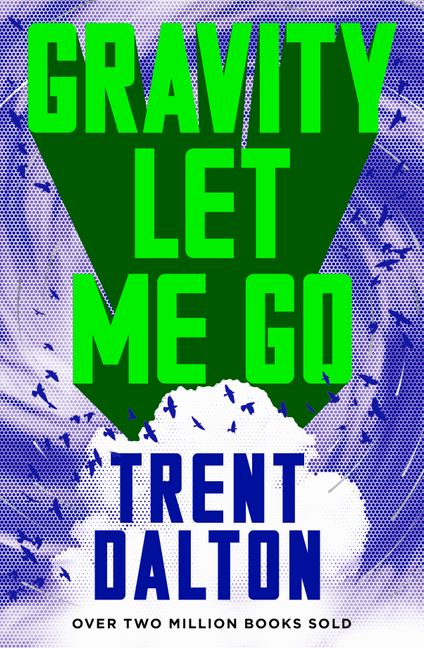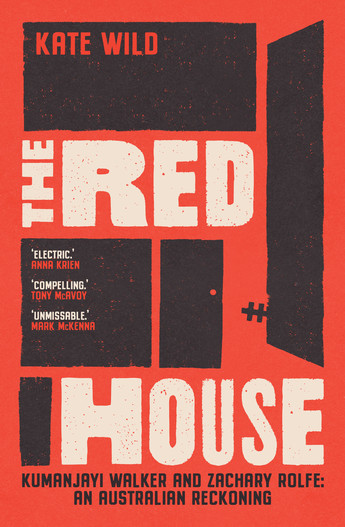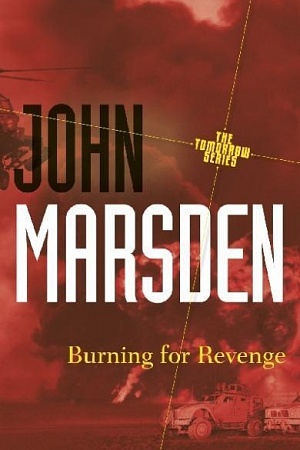Reading Australia: ‘The Gathering’ by Isobelle Carmody
My postgraduate student frowned. ‘The Gathering? Isn’t that the one where someone sets a dog on fire?’ Spoiler alert: indeed it is. It is the book’s most memorable scene; it is certainly the most horrific. My postgrad had read Isobelle Carmody’s 1993 novel in high school and that was the first memory of it which surfaced. The scene shocked readers and alienated many: ‘I re-read the novel recently but I skipped that chapter’ wrote one online reviewer.
The Gathering wasn’t the first of Carmody’s fantasy novels. Something of a writing prodigy, she began The Obernewtyn Chronicles, perhaps the best known of her fantasy series, while still in high school, and continued to work on the first volume, Obernewtyn, while completing a BA in literature and working as a cadet journalist. It was published in 1987, when she was still in her twenties. The seventh and final volume in the series, The Red Queen, will be published at the end of this year.
As most titles in the genre do, the novels explore the forces of darkness and light and the battle between good and evil, with the hero’s soul at stake. The Gathering is no different, but was the first of Carmody’s novels to use a real-life setting, and one that teenage readers can readily relate to: a suburban high school, albeit one where bullying is rife and seemingly condoned, even encouraged, by the sadistic vice principal Mr Karle. The school is called Three North and to new student Nathanial Delaney it looks like a concentration camp, a ‘square, slab-grey complex set on an asphalt island’. Here the battles take place on playing fields or in the gym, or between deserted classroom blocks at night, while packs of feral dogs growl in the darkness. The story has fantastical elements but at heart it is a study of fascism, in which a whole community or ‘district’ is controlled by a power-mad dictator with the help of gangs of thugs and militant youth groups.
The narrator, Nathanial, senses ‘something wrong and unnatural, something dead’ when he first glimpses Three North and this only increases his feelings of resentment towards his mother who has relocated them to an unattractive district called Cheshunt where ‘the skyline bristled with pipes belching smoke into the sky’ and an abattoir overlooks the school. But despite its bleakness, Cheshunt has a reputation as a ‘good safe neighborhood’, unlike the surrounding districts where teenage crime is prevalent, and Nathanial’s mother seems to value that security above all. A single mother who works a lot of night shifts in a nursing home and is rarely home to supervise her son, she particularly approves of the town curfew: nobody allowed out on the streets after ten at night without a specific reason, or after nine for those under eighteen.
 The Gathering (Puffin first edition, 1993)
The Gathering (Puffin first edition, 1993)
Buy this bookNathanial’s father has just died but his parents have been long divorced and Nathanial has few memories of him, apart from troublesome nightmares about being chased by a monster with his father’s face. He doesn’t understand why his mother has moved them to Cheshunt, but it is the last in a long series of relocations, one result of which is that Nathanial doesn’t make friends easily, or at all. It is no different at Three North where he seems to be the only one bothered by the stink from the abattoir and where, when he declines Mr Karle’s ‘invitation’ to join the school youth group known as The Gathering, he is victimised and bullied.
He does, however, find himself mysteriously drawn to a small group of four other misfits in the school who seem governed by a prophetic wraith called Lallie. They tell Nathanial that they have been drawn together by the ‘forces of light’ to fight an inherent and deep-seated evil in Cheshunt. Nathanial is the fifth and final link in the ‘Chain’, and now the fight against the dark, and the healing, can begin.
Initially sceptical, Nathanial begins to find evidence of this darkness in the town’s troubled past when he embarks on an oral history project and interviews former students about the early days of the school. He also learns that each member of the Chain – Nissa Jerome, Indian Mahoney, Danny Odin and Seth Paul – has inner demons as insistent as his own. This is reflected in the various objects or symbols each of them feels compelled to acquire: Danny has been the victim of police brutality, and he carries a replica of the Olympic torch (the torch of justice); Indian, a pacifist tormented with guilt over his younger sister’s death, has a stone bowl stolen from the maritime museum (the bowl of healing); smart, self-reliant but inwardly damaged Nissa’s symbol is a rusty sword taken from a cemetery angel (the sword of strength); Seth, an emotionally weak alcoholic, son of the police chief, contributes an antique telescope (the eye that sees). Nathanial has felt compelled to steal a flat metal disc from a sculpture on the desk of Mr Karle, and this is the circle of time.
What do all these symbols mean, and what possible antidote can they be to the institutionalised evil that operates in the heart of Cheshunt? This is where the novel enters fantasy territory, but before it does it introduces the chief villain who, chillingly, is the vice principal of Three North. (If there is a principal, he or she is never mentioned.)
Mr Karle, nicknamed the Kraken, is short and bald, his head ‘brown and shiny like polished wood’ but there is an ‘aura of physical strength about him’. Disconcertingly, he has a habitual smile, even when his eyes – ‘the indefinite shade of the sea before a storm’ – are cold and induce in Nathanial a ‘strange falling sensation’. Nathanial doesn’t trust that smile: ‘I thought a maniac who killed people for fun might smile like that.’ This is, of course, prophetic. At the climax of the story, Mr Karle, like some ‘hellish director’, is smiling with a ‘bright, corrupt glee in his eyes’ as he orders the destruction of the members of the Chain during the epic battle between Darkness and Light.
 The Gathering (Puffin, 1996 edition)
The Gathering (Puffin, 1996 edition)
Buy this bookComparisons with Hitler spring readily to mind. The packs of feral dogs that roam the borders of Three North – which, we remember, has all the concrete unloveliness of a concentration camp – are killers and are there to instil fear in the townspeople and to actively discourage explorers and curfew breakers. The students are kept in check by a brutish patrol under Mr Karle’s orders called ‘fixers’, and his disciples, the youth group known as The Gathering, have all the fervour of Hitler Youth; within their ranks are murderers and sadists, their actions condoned and approved of by their leader. The town’s police force are also disciples (‘Young people need to be kept in order’) and are intent on maintaining a ‘good neighborhood’, even if it means loss of personal and civic freedoms. Early in the story Nathanial, enraged that his mother has called the police because he wasn’t at home one night when she returns from work, tells her ‘they acted like Nazis’ in their interrogation of him. His mother is shocked at the comparison but later in the story, when the two have mended some of their differences and are on the path to reconciliation, her views have modified. Nathanial asks her if she thinks a policeman could be evil, and she replies:
‘I think it’s easier to be evil when you have power, when you’re strong.’ ... She was smiling but I saw deep unease in her eyes. ‘But I don’t suppose they set out to be evil. It’s just that the power they have to control ends up making them want to control everything. I think wanting to control things is where evil begins.’
The corruption of power and its consequences is the central theme of the novel, and Nathanial’s utterly convincing voice helps readers to identify with him and the other teenage characters who find themselves victims of abuse, whether it be domestic violence, bullying, police brutality or injustice. In the end there is only one way to defeat evil, as Lallie explains: ‘You have to believe in justice to make it happen. You have to believe in the light, or you live in darkness. Believing is the magic.’
With a skilful but evil intent, Carmody has made the most admirable character the one who will suffer most: Nathanial’s long-haired Chihuahua named The Tod, given to him as a puppy by his grandmother over the objections of his mother because she thought the boy ‘needed something’ of his own. From the opening pages he is set up as Nathanial’s most frequent and best-loved companion. Whenever things get tense at home, as they do more frequently as his mother struggles to understand her son’s seemingly rebellious behaviour, boy and dog take off together, exploring on foot or by bicycle, The Tod in the front basket; at night, home alone, the two curl up together, watching television. At one point, The Tod saves Seth from walking into the path of a pack of feral dogs. Nathanial keeps him inside the house when he is in school, fearful that his chief tormentor, Buddha, and his gang of bullies might use the little dog to wreak revenge on him for refusing to join The Gathering – as, inevitably, they do. Carmody pulls no punches in describing this gruesome scene, which occupies almost four pages. As far as I know, it is unique in Australian children’s literature. Would any writer for young people include a comparable scene today? If they did, the deed would be committed off-stage, not described in detail and witnessed first-hand by the distraught teenage narrator:
I screamed in utter horror, helpless. The match landed in his tail and flames swept forward up over him. Devoured him.
He arched and coiled, yelping in pain and fright, and then he screamed, a long inhuman howl of agony and terror. For one terrible second, his eyes looked at me from out of the flames, bulging and pleading.
 The Gathering (Puffin latest edition)
The Gathering (Puffin latest edition)
Buy this bookEven just typing the words, my insides are knotted in anguish. John Marsden, who knows a thing or two about writing bleak fiction for young readers, killed a family pet called Checkers in the final pages of his 1996 novel of the same name, but the bloody deed is described in three lines and it is unwitnessed by Checker’s young owner. It is sad, but in no way evokes the degree of pain of Carmody’s scene.
Is it necessary? The killing is Mr Karle’s retribution for Nathanial’s refusal to join The Gathering, and in its horror and inhumanity it brings to mind the way that Hitler’s Nazi bullies treated Jews in pre-war Germany. It is meant to shock. It also echoes another significant episode in the town’s history, when the school caretaker was set alight, allegedly by a student, thus setting off a chain of events which have resonated down the years.
Judith Ridge, an early reviewer of the novel, called it ‘complex and stunning’ and thought that it ‘throws up fascinating details on each new reading’ (Viewpoint, Vol.1 No.3, 1993). Young readers today will recognise references to Tolkien and David Gemmell, and names such as Astaroth, Odin, Elderew, Tron and the Kraken will resonate with dedicated fantasy readers. Nathanial and his grandfather are both named after the author Nathaniel Hawthorn; a pity they (and Carmody) couldn’t get the spelling right.
The Gathering won the Children’s Book Council of Australia’s Book of the Year, Older Readers, in 1994 and was joint winner of the Children’s Peace Literature Award. Since its first publication it has sold almost 135,000 copies in Australia and been reprinted thirty-five times. It has also been a best-seller in the USA, Britain, Germany and Holland. The novel wears its age well, and has not lost its power to shock: susceptible readers should heed the words of reviewer Pam Macintyre, who wrote in The Age that The Gathering was a ‘great page-turner that is probably best read in daylight and in good company’.











Comment (1)
Leave a comment
If you are an ABR subscriber, you will need to sign in to post a comment.
If you have forgotten your sign in details, or if you receive an error message when trying to submit your comment, please email your comment (and the name of the article to which it relates) to ABR Comments. We will review your comment and, subject to approval, we will post it under your name.
Please note that all comments must be approved by ABR and comply with our Terms & Conditions.